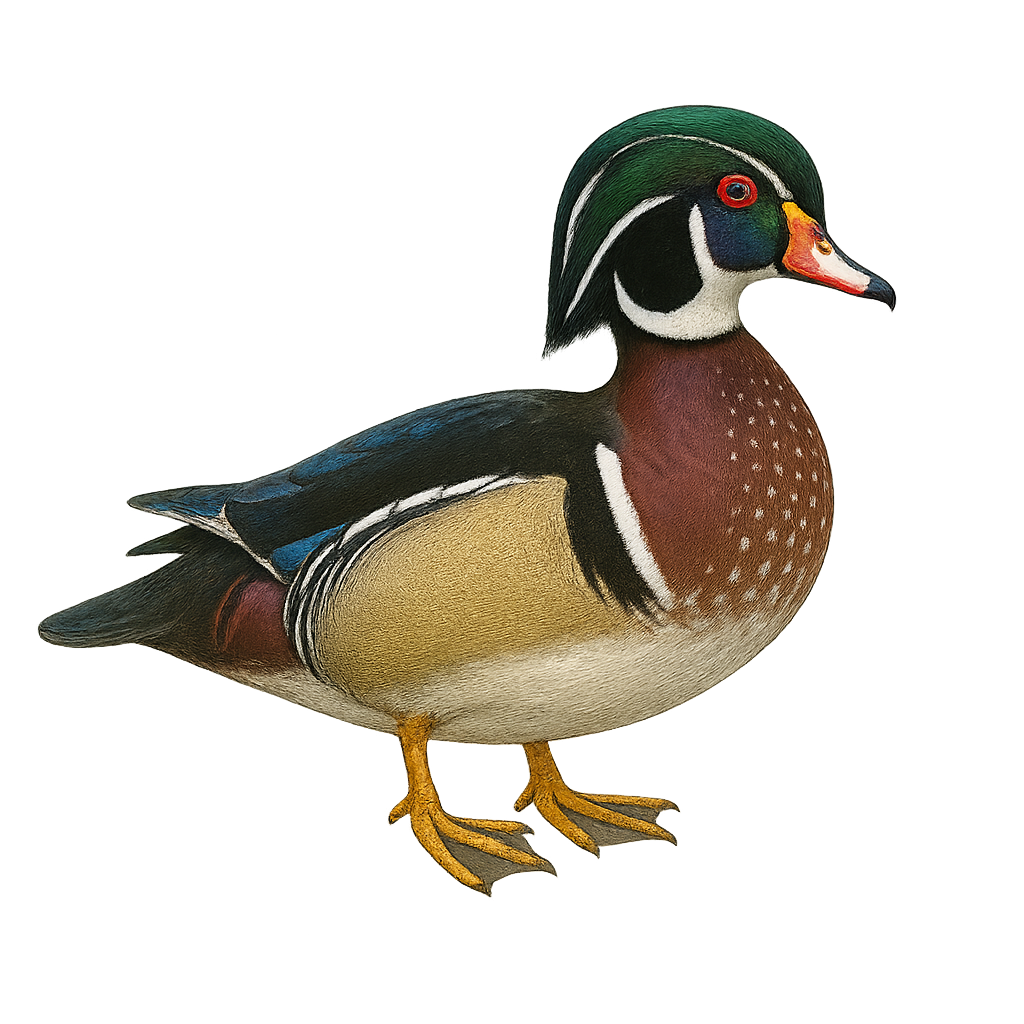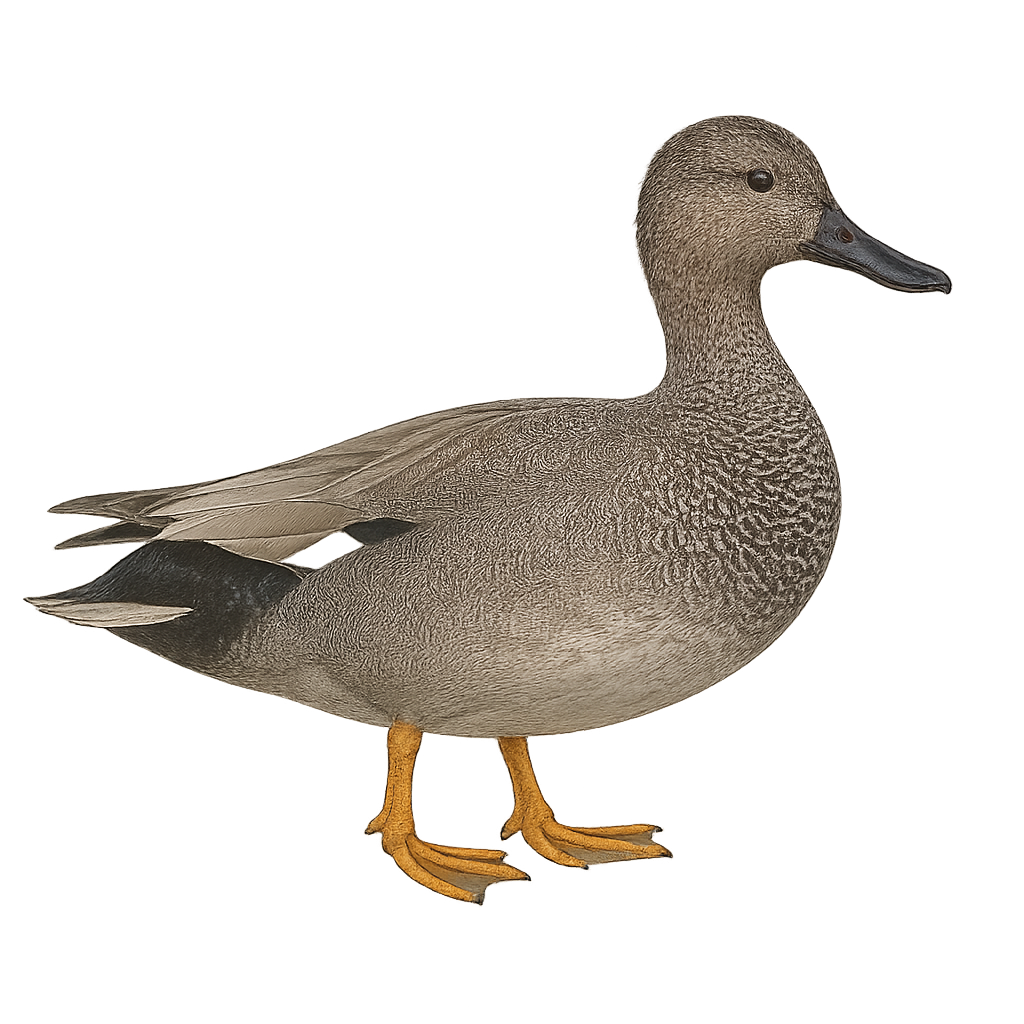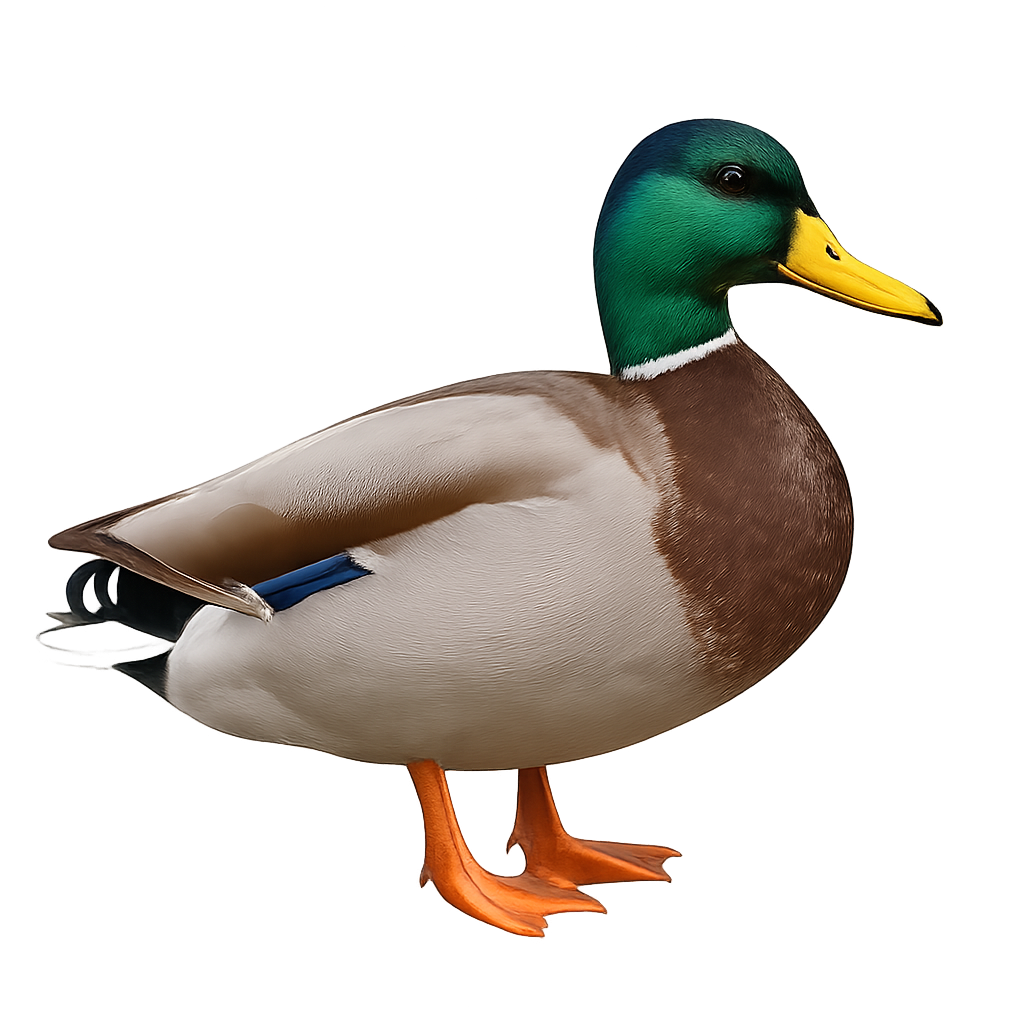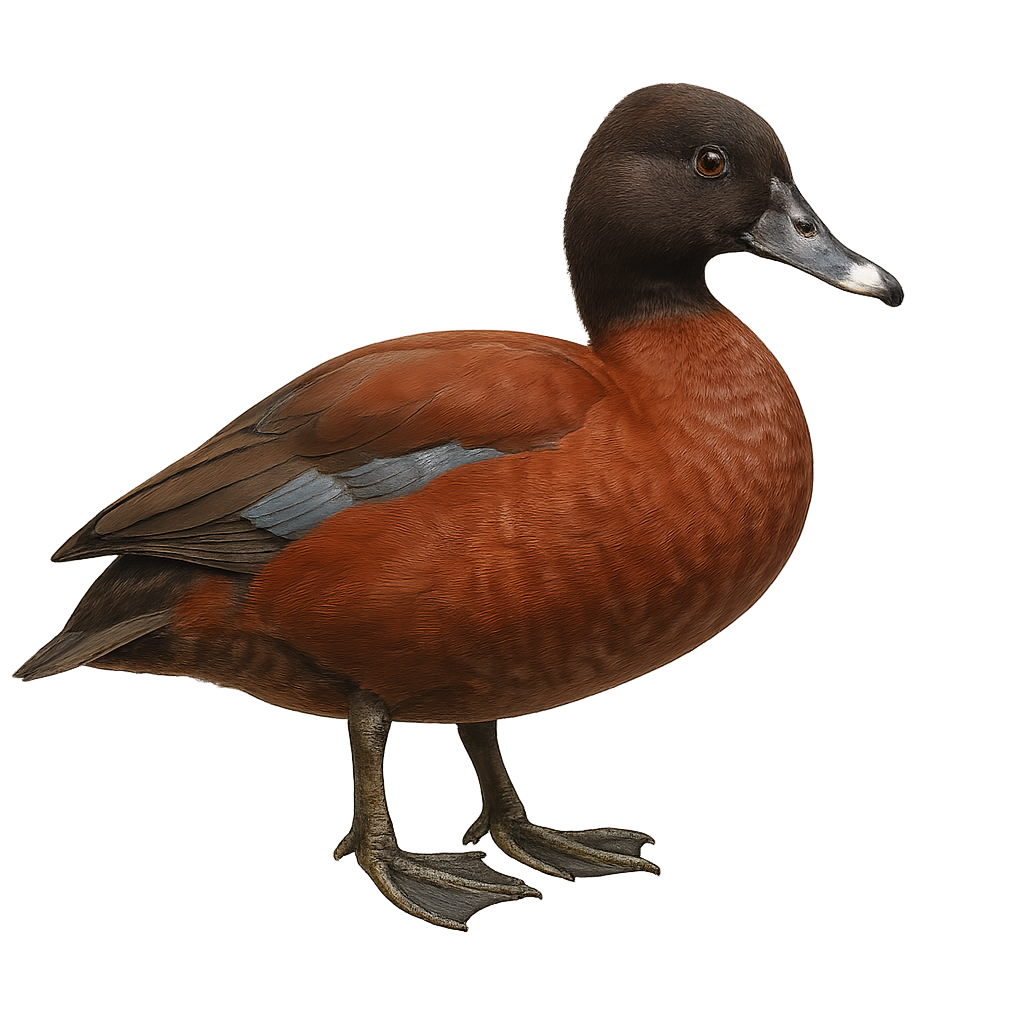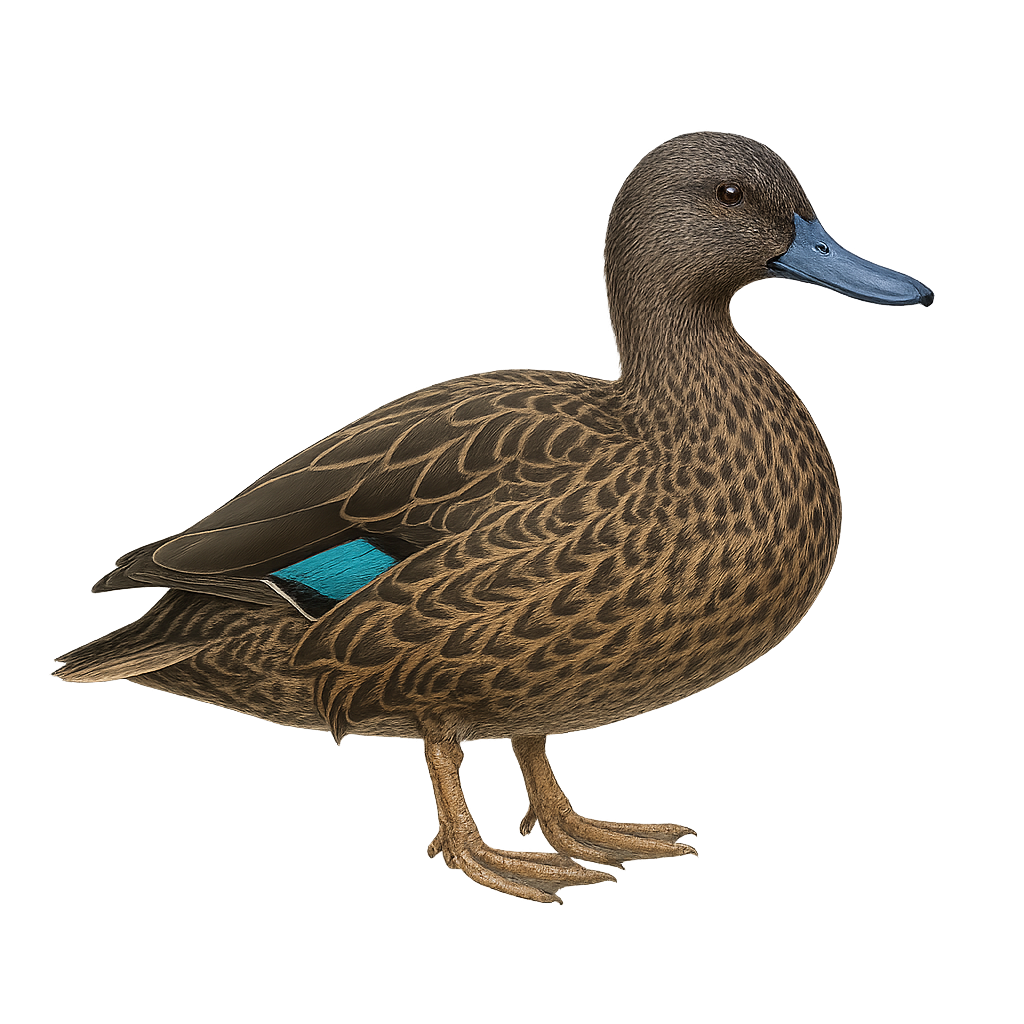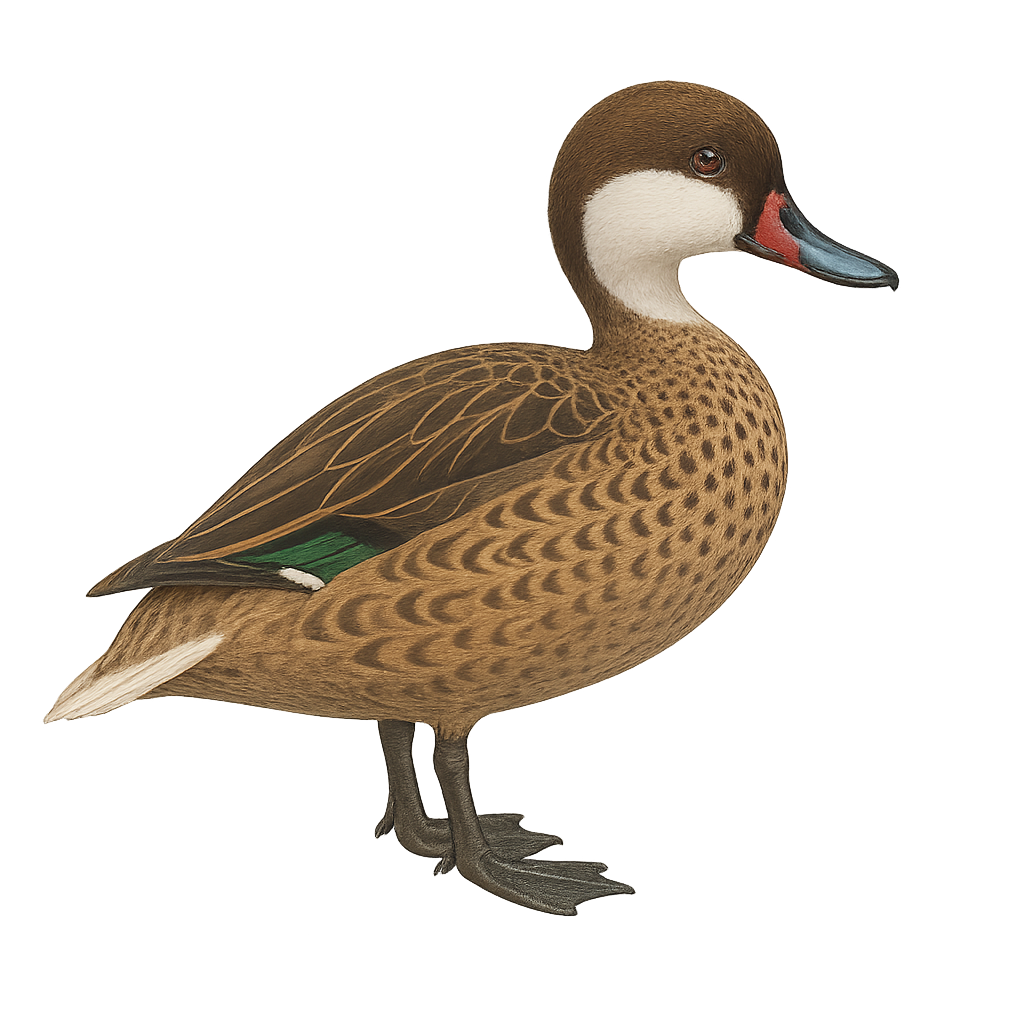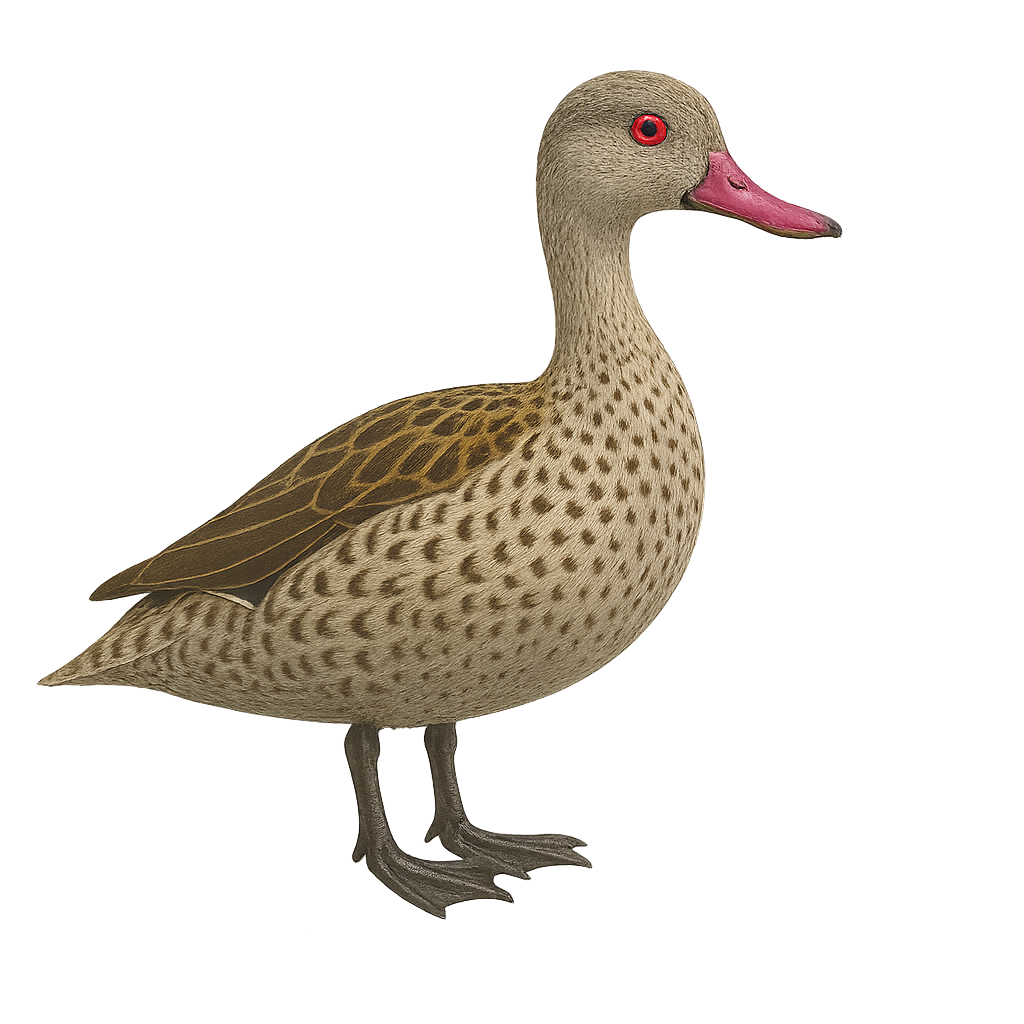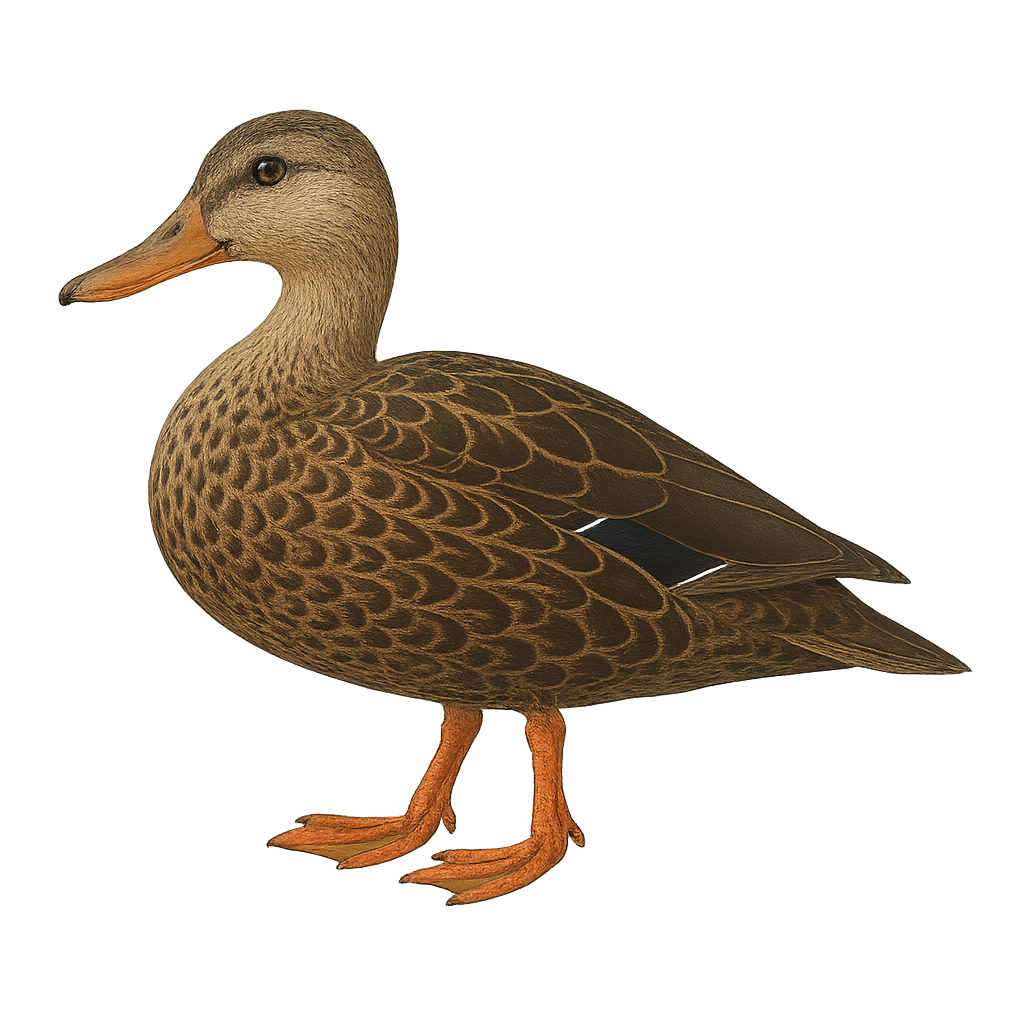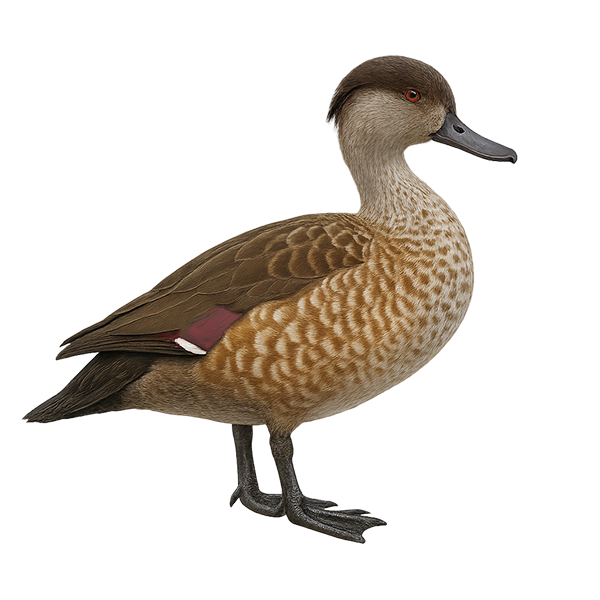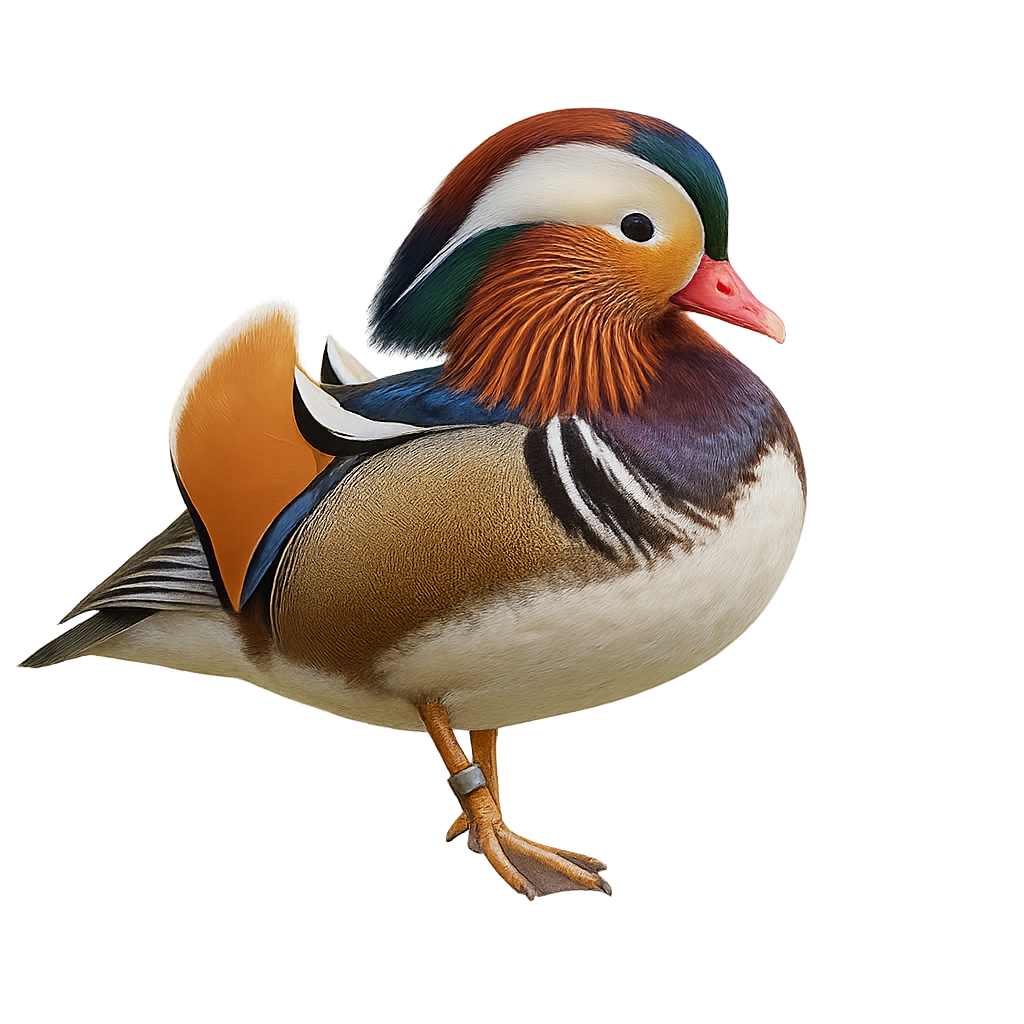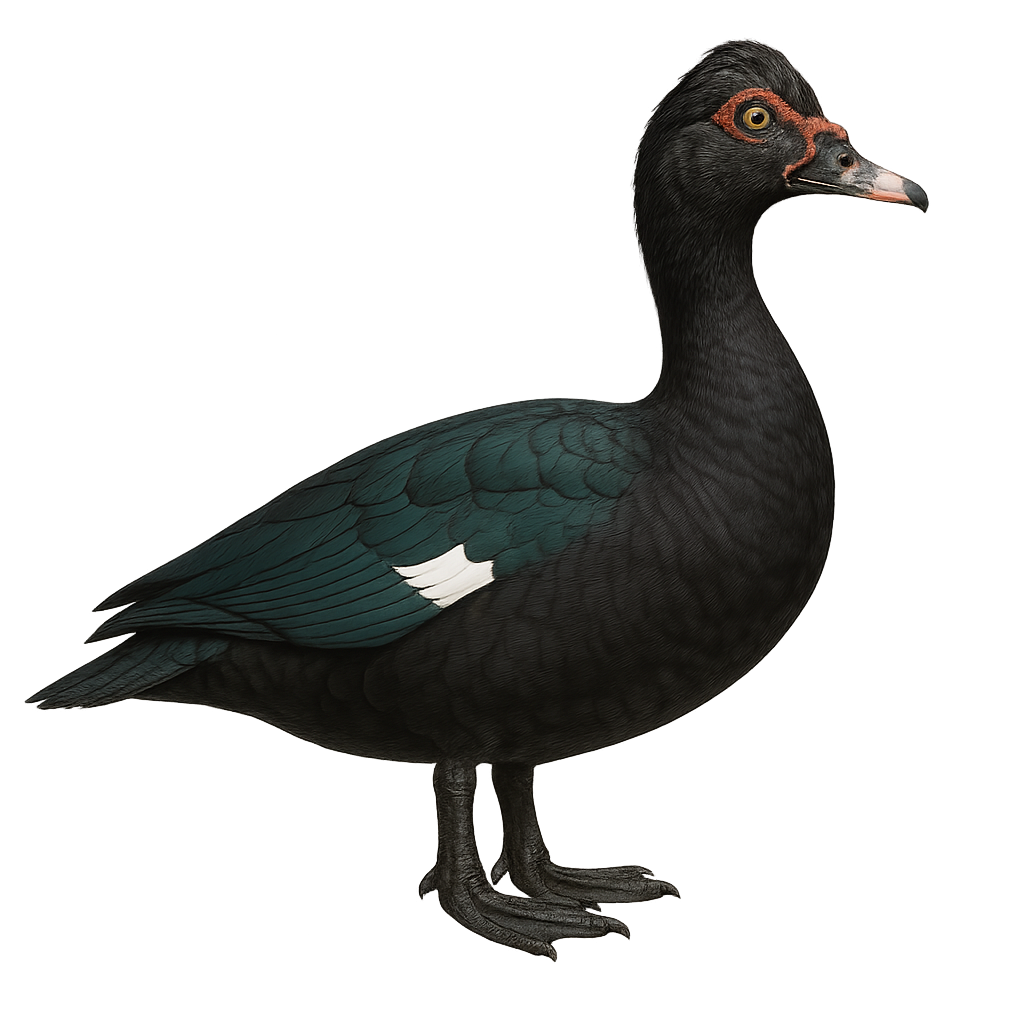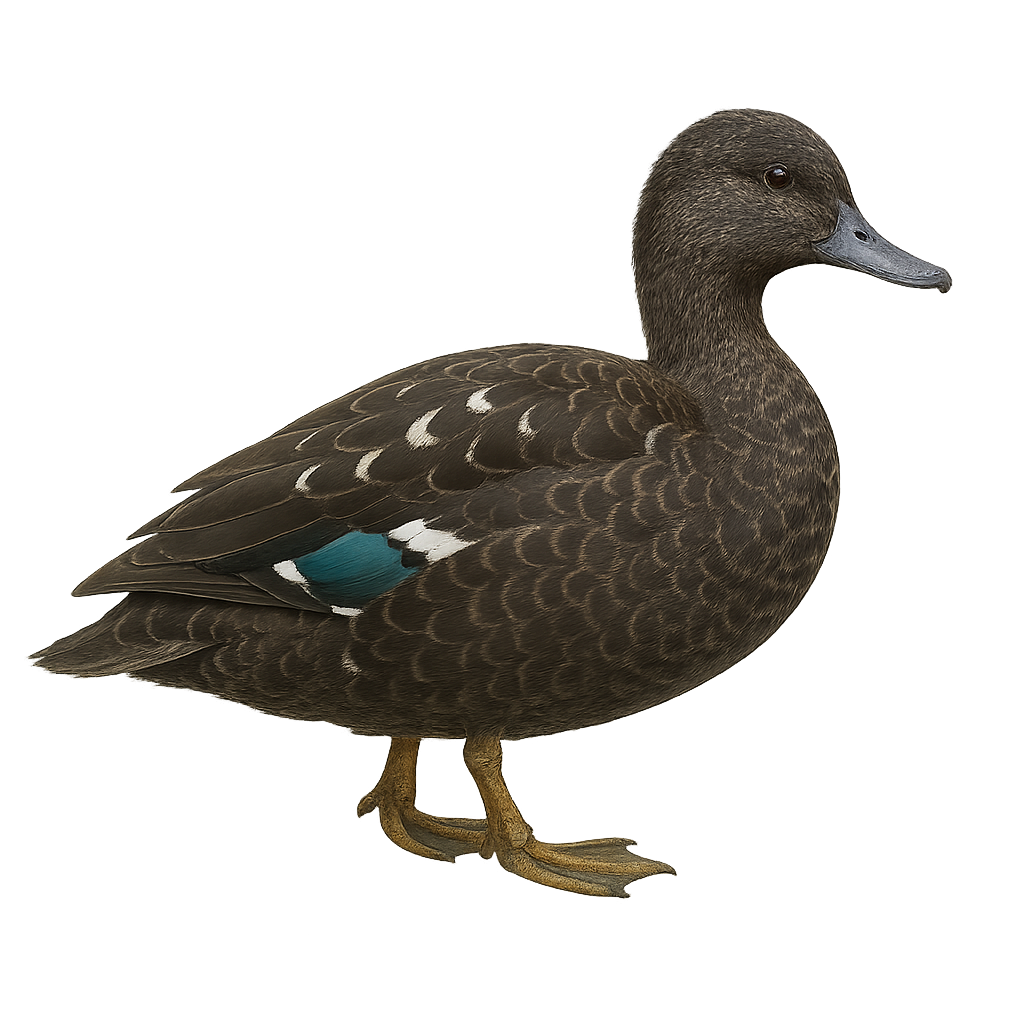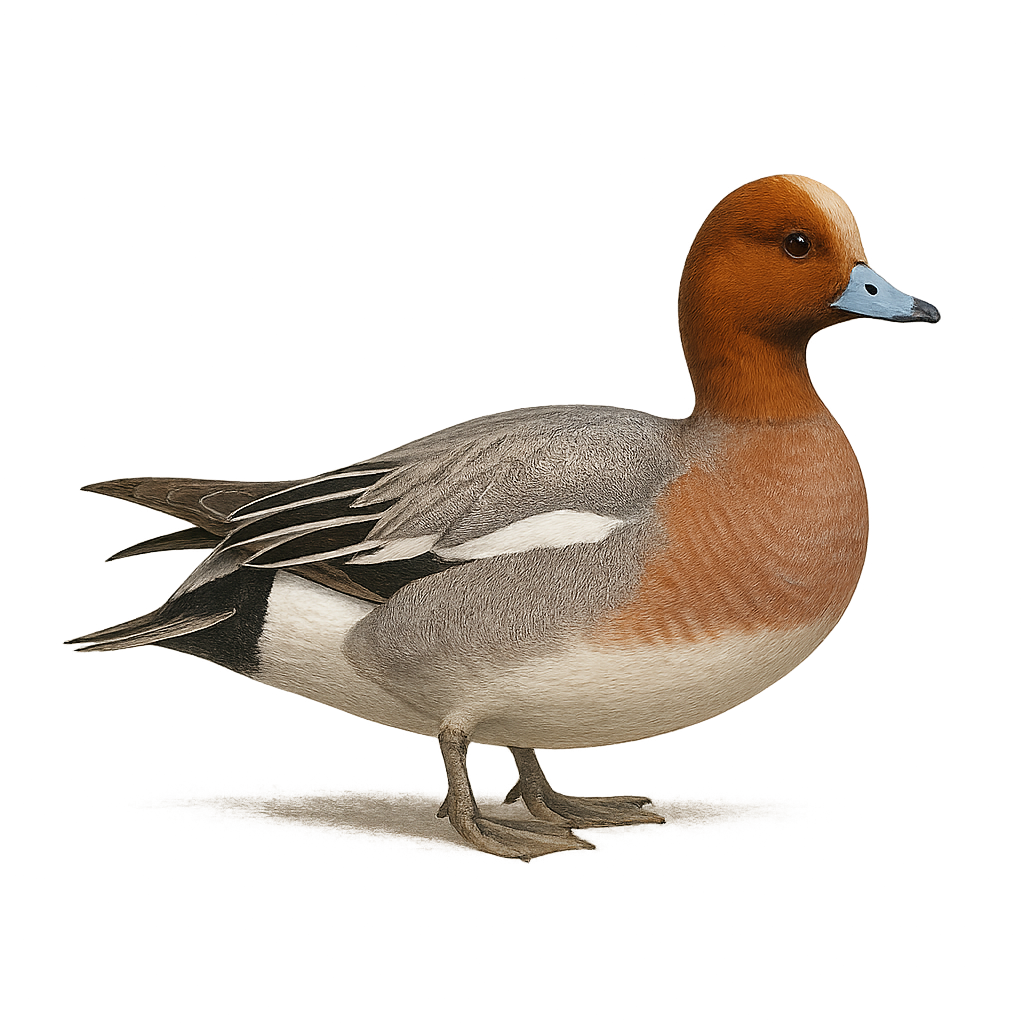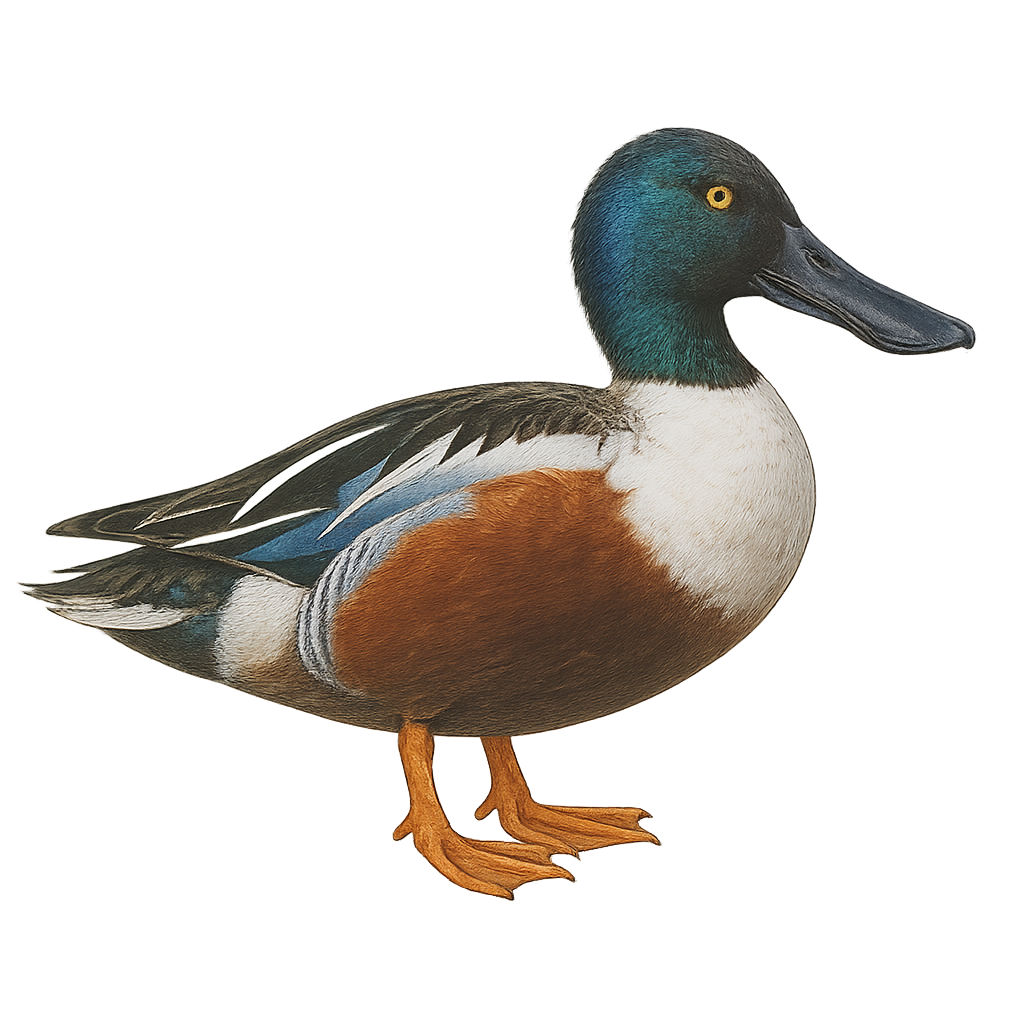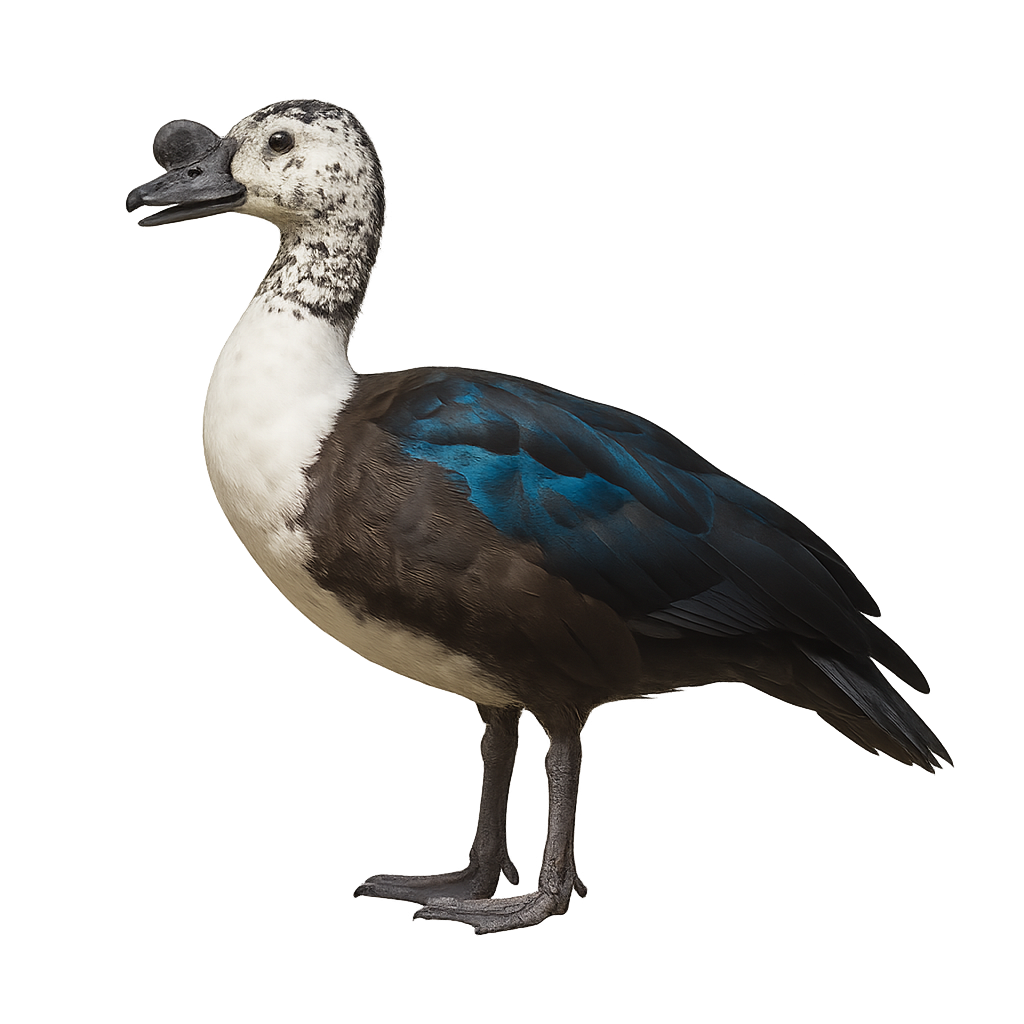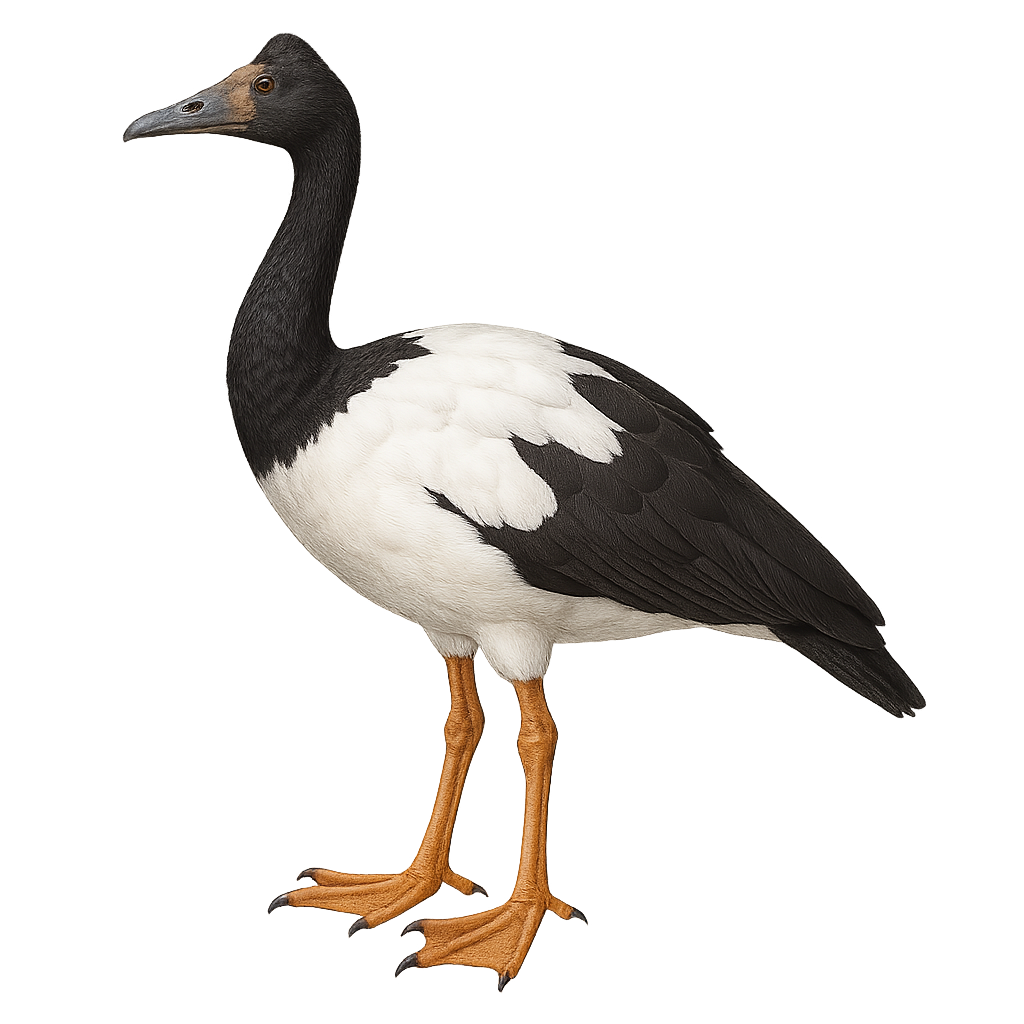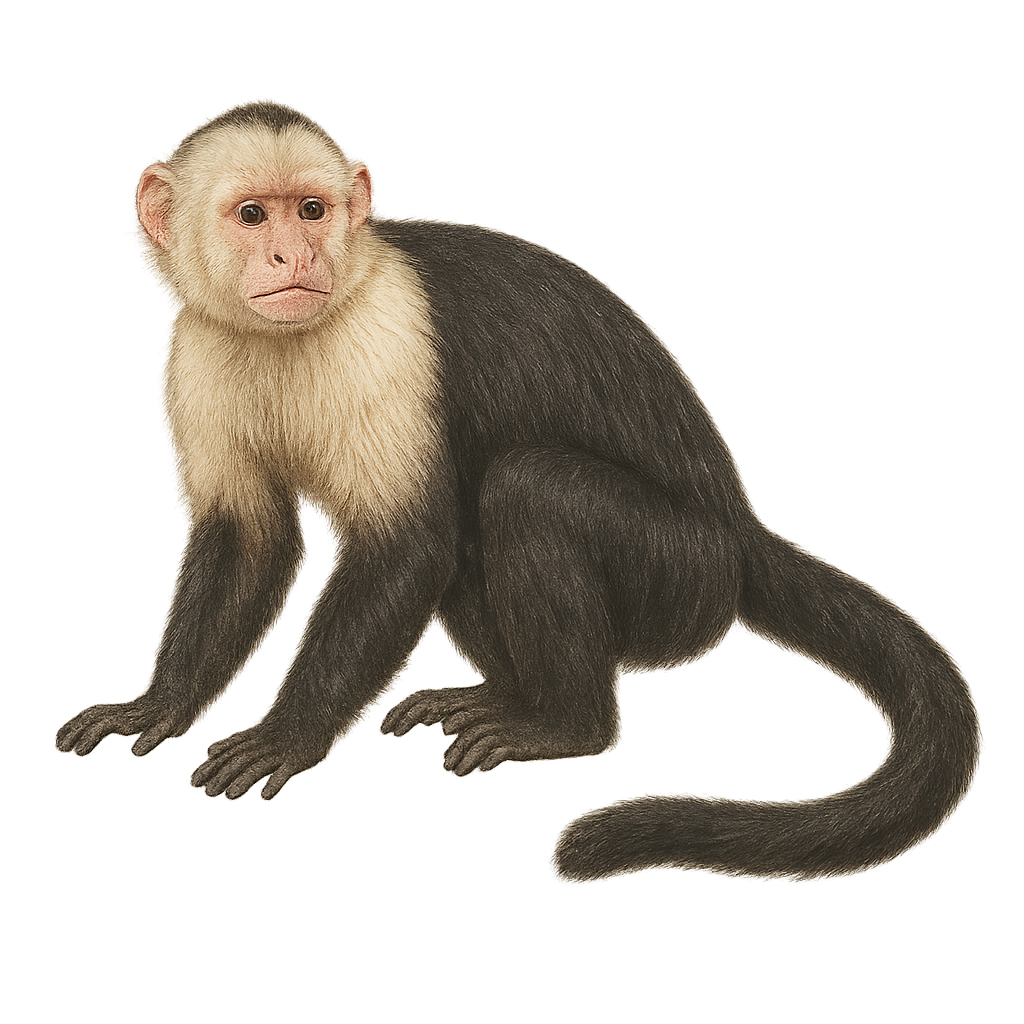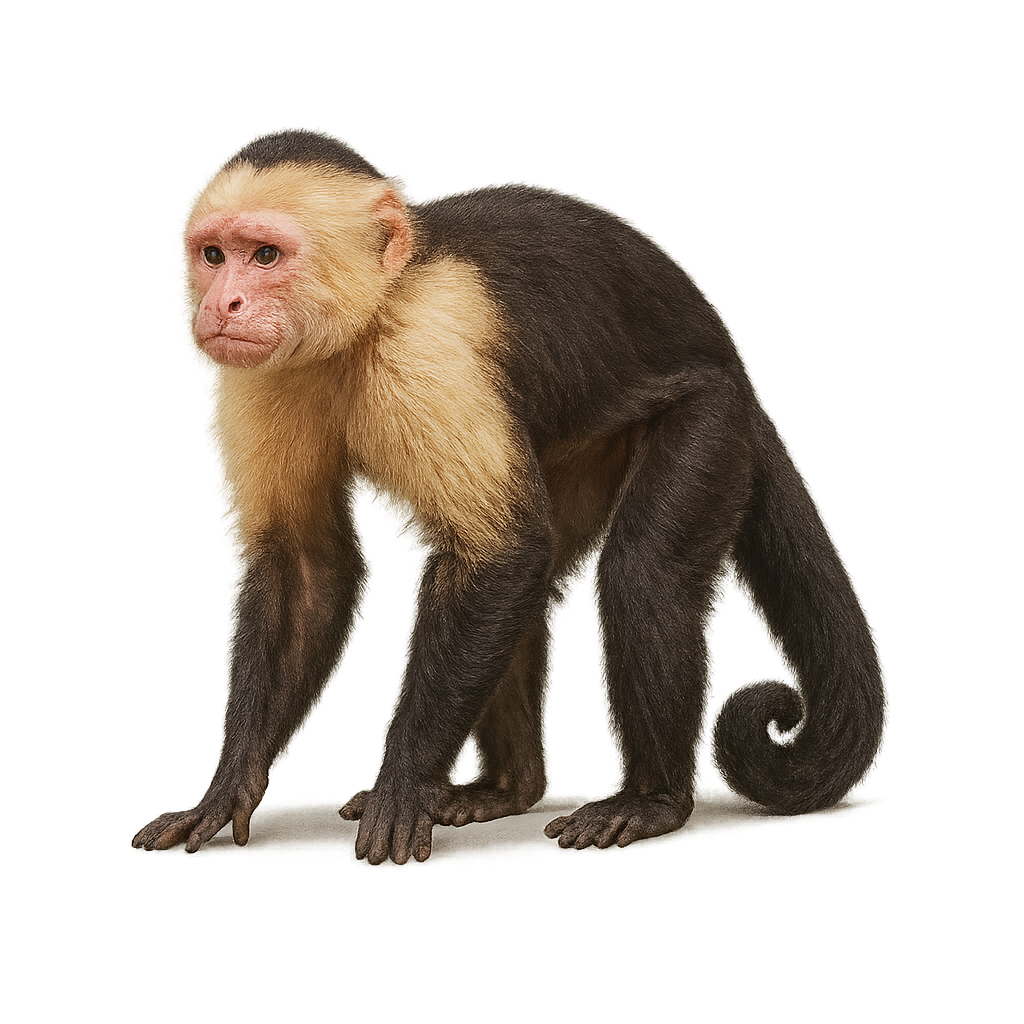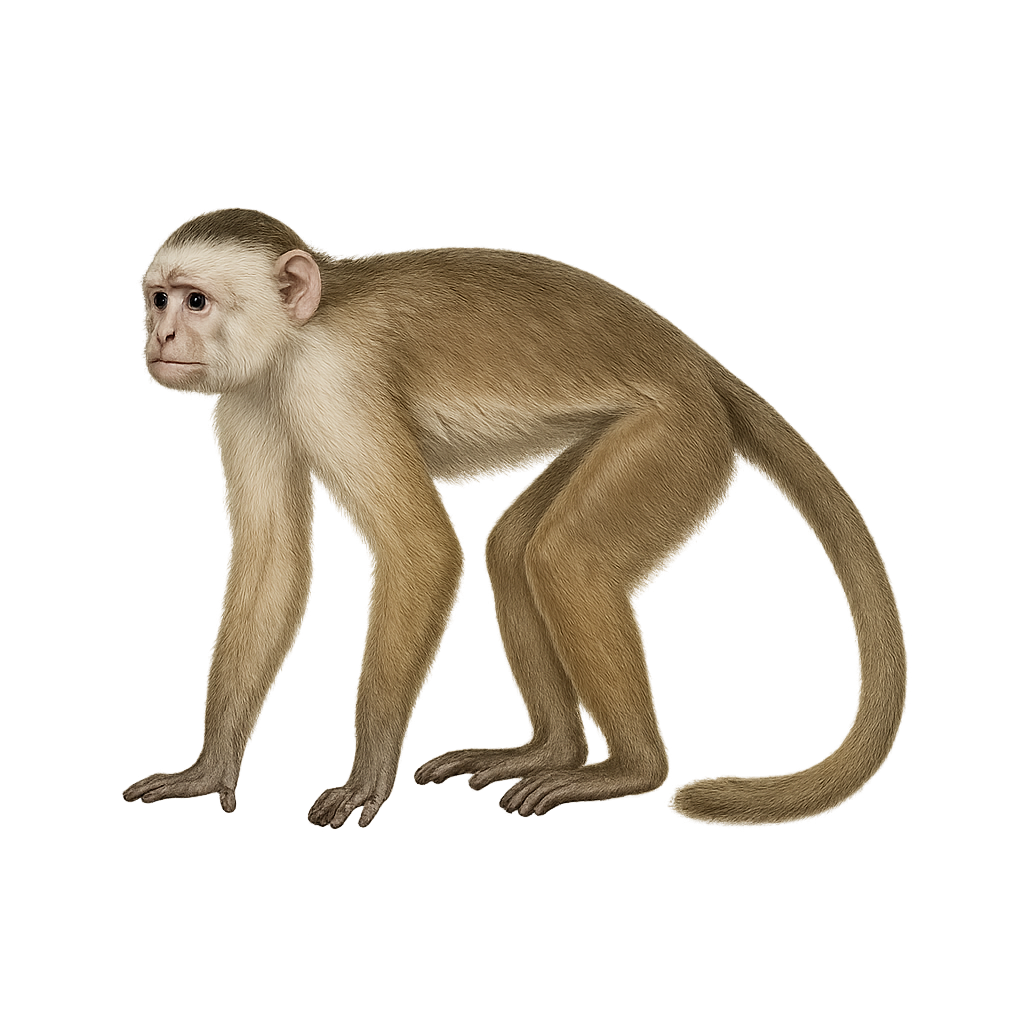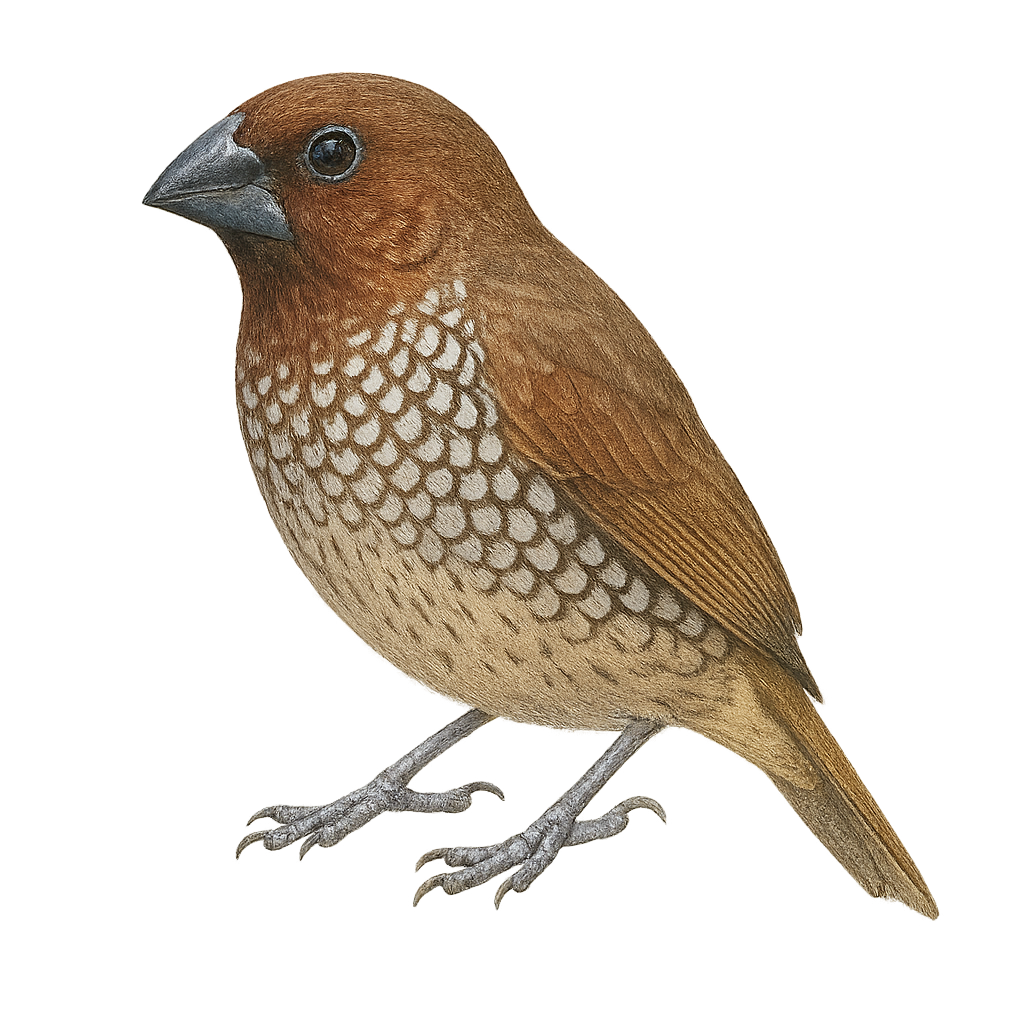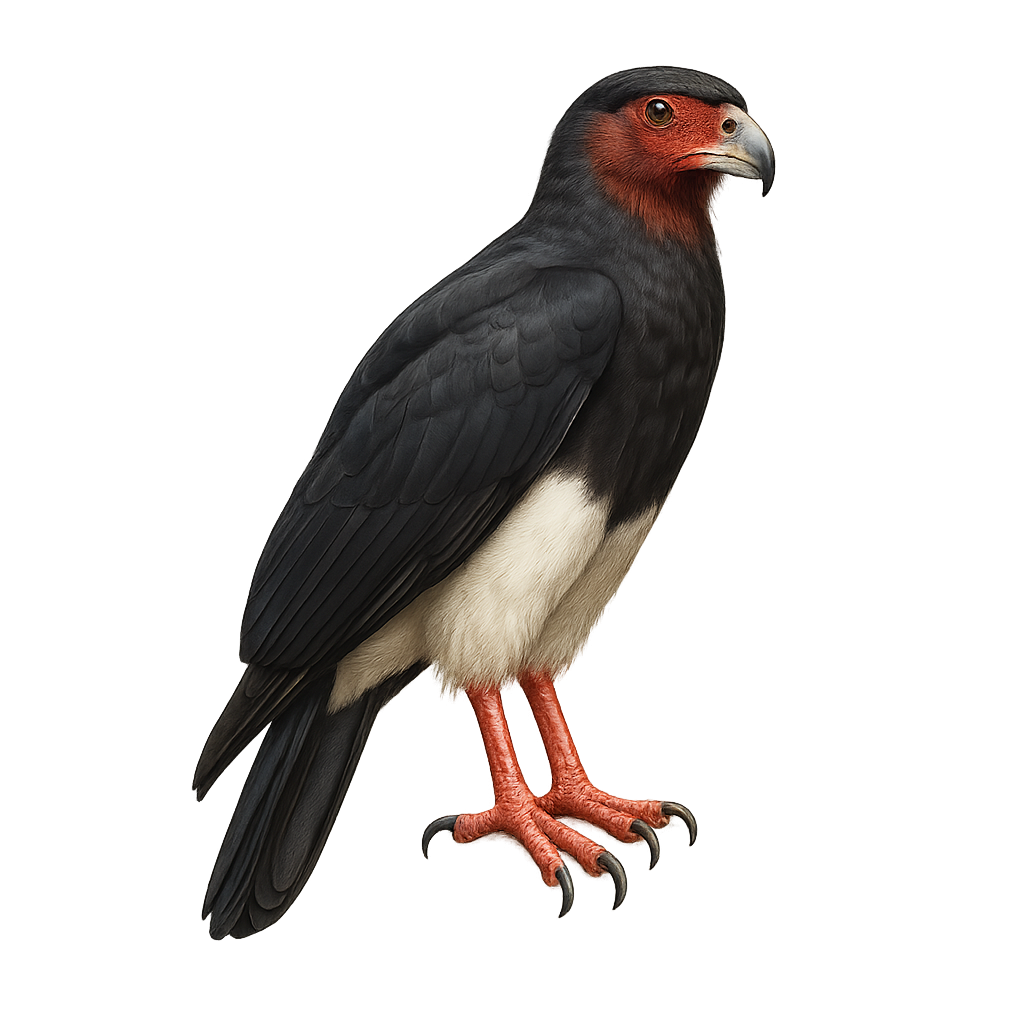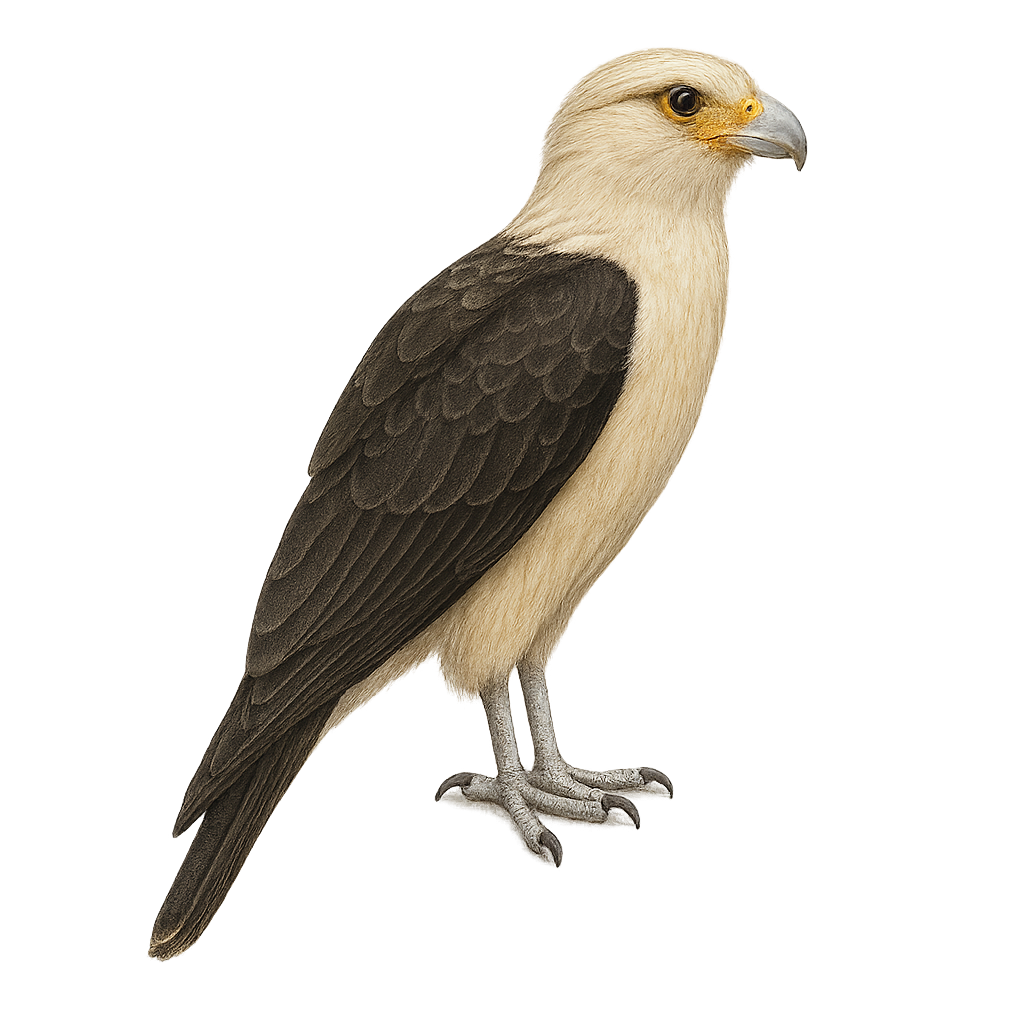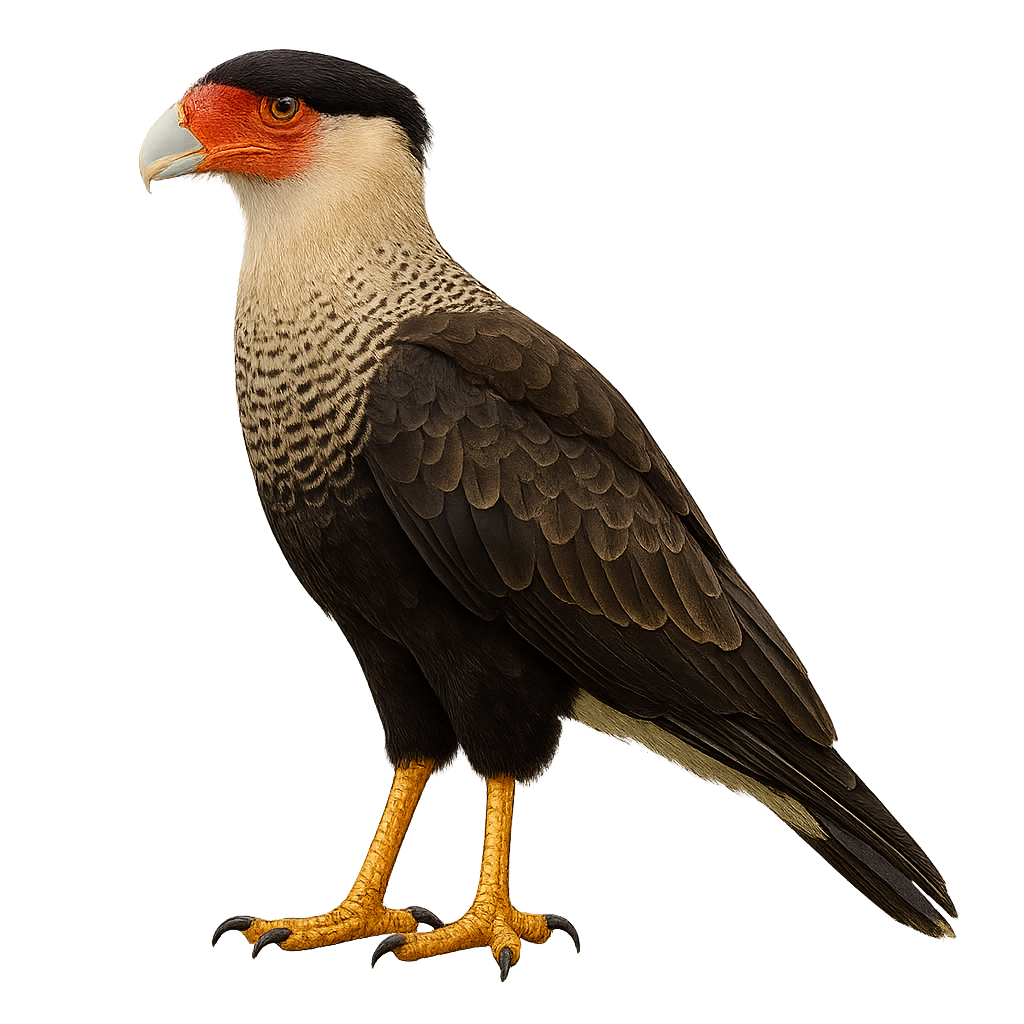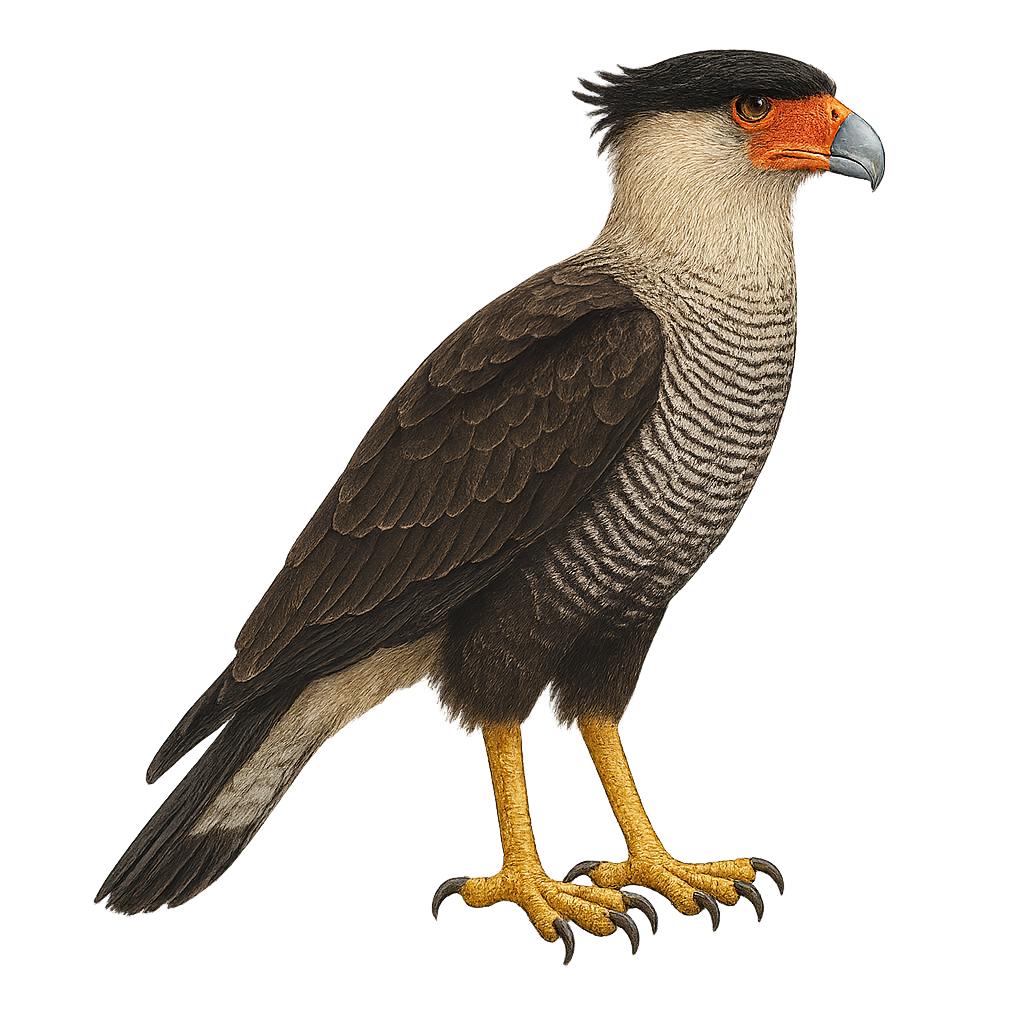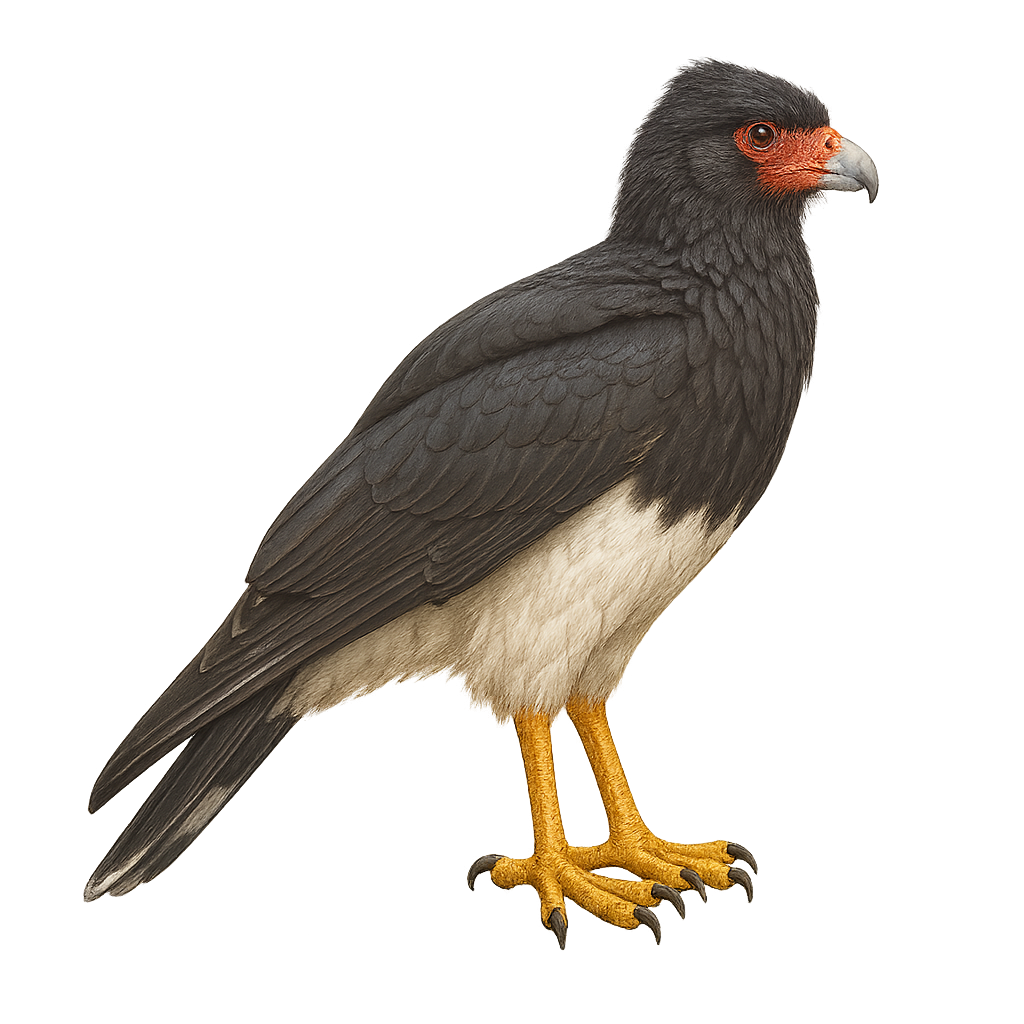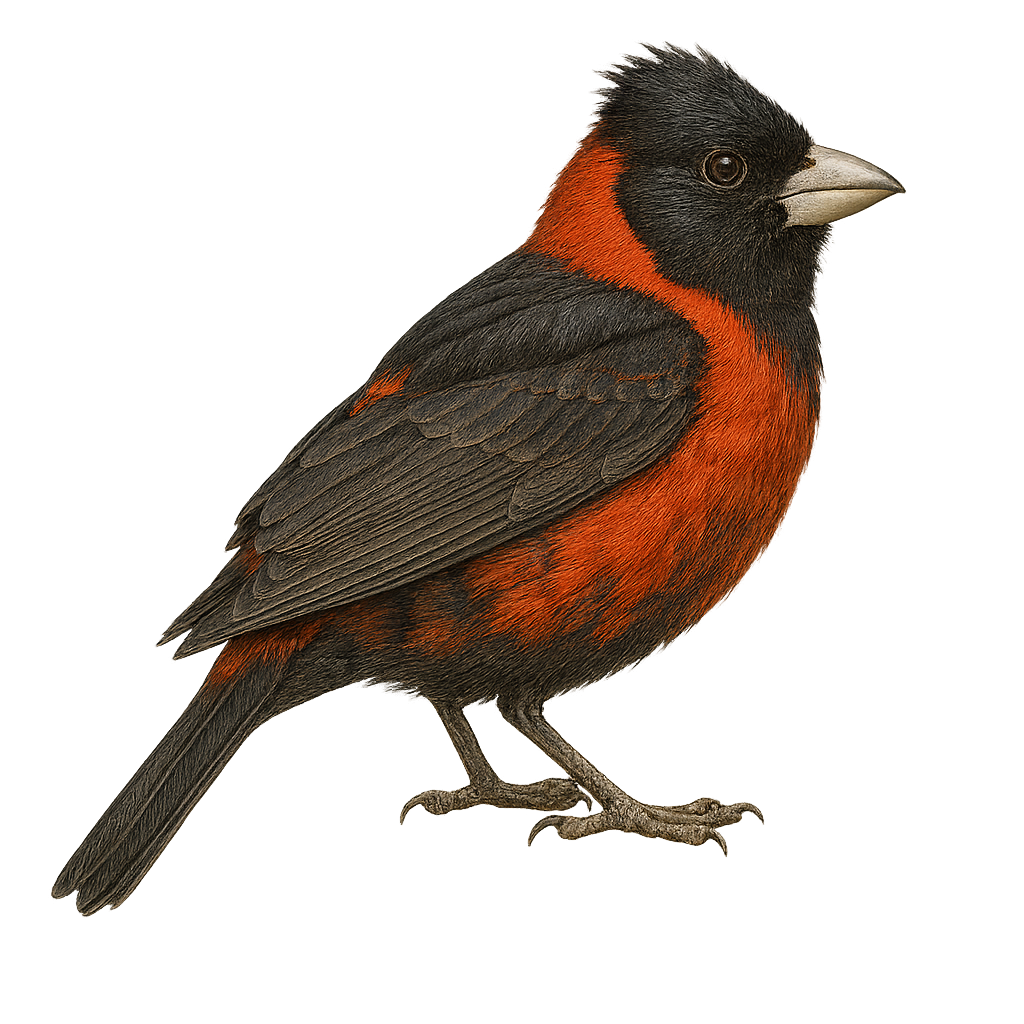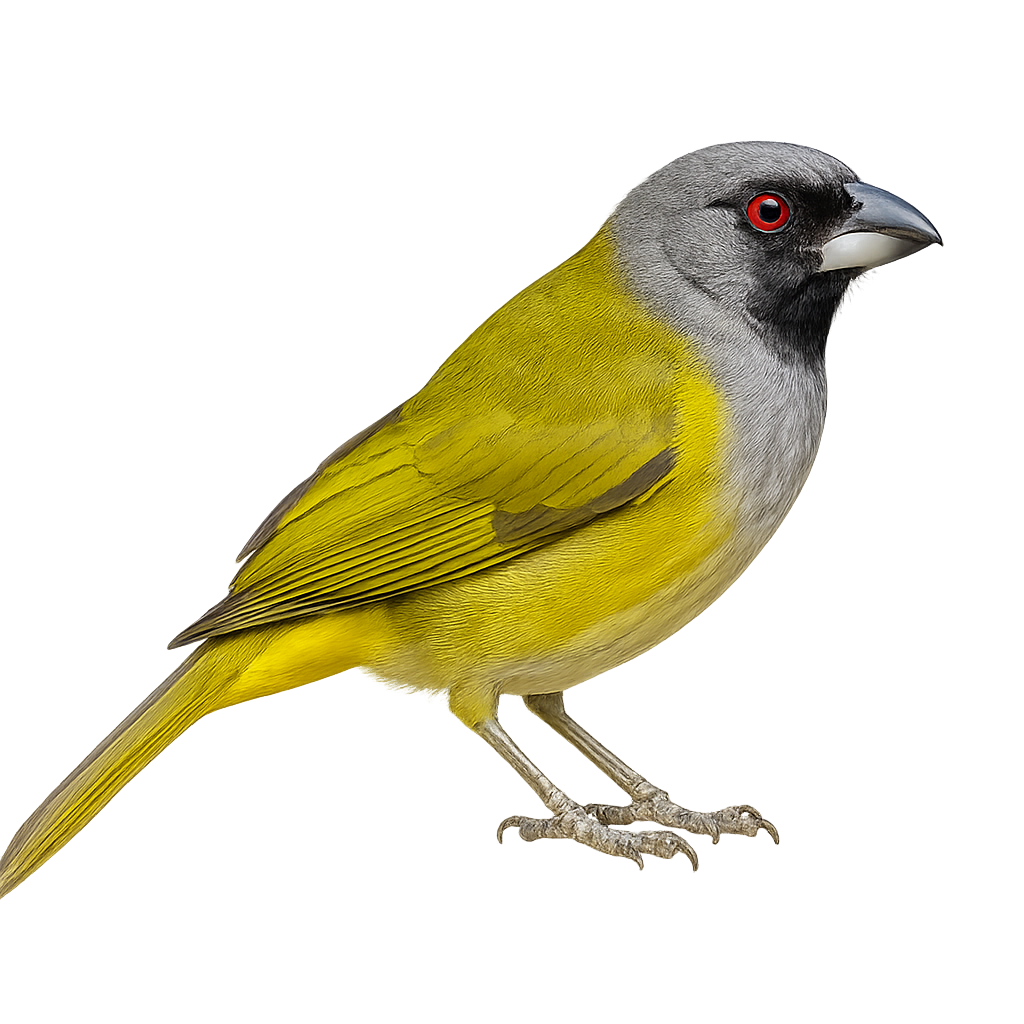The Wood Duck, Aix sponsa, is a striking waterfowl known for its vibrant plumage and unique habits. The male displays bright colors with an iridescent green head, red eyes, and distinctive white patterns, while the female has a more subdued brown-gray plumage with white eye markings. Found primarily in North America, this duck frequents wooded areas near lakes, rivers, and swamps. It is known for its ability to nest in trees, often using natural cavities or artificial nest boxes. The Wood Duck is an excellent swimmer and diver, feeding on aquatic plants, insects, and small fish.
The Gadwall is a medium-sized dabbling duck, measuring between 46 and 56 cm in length with a wingspan of 78 to 90 cm. The male has finely patterned gray plumage with a distinctive white wing patch visible in flight, a black rump, and a dark bill. The female is mottled brown with an orange-edged dark bill. This species inhabits wetlands such as marshes, ponds, lakes, and flooded meadows rich in aquatic vegetation. It feeds mainly on leaves, stems, and seeds of aquatic plants, but also consumes aquatic invertebrates, especially during the breeding season. The Gadwall is a partial migrant, breeding in Eurasia and North America, and wintering in more southern regions. Although listed as Least Concern by the IUCN, it is sensitive to wetland degradation and pollution.
Anas platyrhynchos is a medium-sized duck species, measuring between 50 and 65 cm in length, with a wingspan of 81 to 98 cm. The male is distinguished by its iridescent green head, white neck, and brown-roux body, while the female is brown-speckled, aiding in camouflage. They primarily inhabit freshwater wetlands such as ponds, lakes, slow rivers, and marshes. They feed on a wide variety of plant and animal matter, including seeds, roots, insects, and small fish. Reproduction occurs in spring, with the female building a ground nest near water, where she typically lays 8 to 13 eggs. Incubation lasts about 27 to 28 days, and ducklings are capable of swimming and feeding themselves shortly after hatching. A very widespread species, it is classified as Least Concern by the IUCN.
The Hartlaub's Duck, or Pteronetta hartlaubii, is a little-known species of duck endemic to the tropical rainforests of Central Africa. This medium-sized duck has dark brown plumage with metallic sheen on its wings and a lighter head. It is often seen in small groups, moving quietly along rivers and swamps. Its preferred habitat includes dense forests and wetlands, where it feeds mainly on seeds, small invertebrates, and aquatic plants. Although generally discreet, it can be curious and approach silent observers. Habitat conservation is crucial for its survival, as deforestation poses a significant threat.
The Meller's Duck, Anas melleri, is an endemic species of Madagascar, often mistaken for the mallard due to its resemblance. This medium-sized duck has brown plumage with lighter shades on the belly and greenish reflections on the wings. It primarily inhabits wetlands, lakes, and rivers on the island. Its population is declining due to habitat loss and hunting. The Meller's Duck is monogamous and typically breeds during the rainy season. It plays a crucial role in the local ecosystem by aiding in seed dispersal and controlling aquatic insect populations.
The White-cheeked Pintail, or Anas bahamensis, is a medium-sized duck known for its distinctive white head with a red spot on the bill and speckled brown plumage. It inhabits wetlands in the Caribbean, South America, and the Galápagos. Preferring shallow waters, it feeds on aquatic plants, insects, and small crustaceans. Often seen in small groups or pairs, this duck has a fast, direct flight but spends much time swimming and dabbling. Its population is stable, though habitat loss and hunting pose threats.
The Cape Teal, Anas capensis, is a small dabbling duck native to sub-Saharan Africa. It is easily identifiable by its bright red bill and pale grey plumage speckled with dark spots. Males and females are similar, though females are slightly smaller. This duck prefers aquatic habitats such as lakes, marshes, and slow-moving rivers. It primarily feeds on aquatic plants, seeds, and insects. Although generally discreet, it can form large flocks outside the breeding season. Its population is stable, but it is sometimes threatened by habitat loss and water pollution.
The Mexican Duck, Anas diazi, is a dabbling duck species native to the southwestern United States and Mexico. It closely resembles the Mallard but is distinguished by its more subdued and uniform plumage, lacking the Mallard's characteristic green head. Both males and females look alike, which is uncommon among ducks. They favor aquatic habitats such as lakes, ponds, and slow-moving rivers. Their diet is varied, consisting mainly of aquatic plants, insects, and small invertebrates. Although their population is stable, habitat loss and hybridization with other duck species, particularly the Mallard, pose potential threats.
The Crested Duck, or Lophonetta specularioides, is a medium-sized Andean duck, recognizable by its subtle crest and brown-gray plumage with iridescent wing highlights. It inhabits high-altitude lakes, marshes, and slow rivers, mainly in the Andes and Patagonia. Well adapted to cold, windy environments, it is omnivorous, feeding on aquatic vegetation, invertebrates, and occasionally small fish. This duck is gregarious yet discreet, often seen in small groups. Its population is considered stable overall.
The Mandarin Duck is a spectacular waterfowl, easily recognizable by its vibrant and colorful plumage, particularly in the male. The male displays an impressive mix of bright colors, including orange, blue, and green, with a distinctive crest on the head and feathers on the sides of the neck that resemble scales. The female, more subdued, has brown plumage with subtle white accents around the eyes and bill.
Native to East Asia, the Mandarin Duck is now widely distributed in Europe and North America, often seen in parks and gardens around bodies of water. This duck prefers calm waters in lakes, ponds, and rivers, where it feeds mainly on seeds, fruits, insects, and small crustaceans. Although the Mandarin Duck is not considered endangered, its natural habitat can be threatened by pollution and the loss of wetland areas.
The Muscovy Duck, Cairina moschata, is a large duck native to Central and South America. It is easily identified by its large size, distinctive black and white plumage, and the red caruncles around its beak. This duck prefers aquatic habitats such as marshes, slow-moving rivers, and lakes, where it feeds mainly on aquatic plants, insects, and small fish. Although often domesticated, the wild Muscovy Duck is more wary and tends to avoid humans. It is known for its strong and direct flight despite its size. Males are generally larger than females and can be quite territorial during the breeding season.
The African Black Duck, or Anas sparsa, is a medium-sized waterfowl known for its dark plumage and distinctive white wing markings. This duck is often found in fast-flowing rivers and streams in the mountainous regions of sub-Saharan Africa. Well adapted to its environment, it prefers swift waters where it can dive for small invertebrates and aquatic plants. Its discreet behavior and dark coloration allow it to blend into the shadows of waterways, making it difficult to spot. Although generally solitary or in small groups, it can sometimes be seen in pairs, especially during the breeding season.
The Northern Pintail is a migratory species of duck, easily recognizable by its slender body and long neck, which gives it an elegant and distinctive silhouette. The male during the breeding season has a colorful plumage, with a green head, brown body, and long bill. The female, on the other hand, has more subdued plumage, brown speckled, adapted for camouflage.
This duck primarily inhabits wetland areas, such as marshes, ponds, and rivers, where it feeds on aquatic vegetation, seeds, and insects. The Northern Pintail is a long-distance migrant, leaving its breeding grounds in Europe and Asia to head to Africa or the Middle East during the winter. Although still fairly widespread, the species is threatened by the loss of its natural habitat due to wetland drainage and intensified agriculture.
The Eurasian Wigeon is an elegant waterfowl, easily recognizable by its distinctive plumage and characteristic whistle. The male, during the breeding season, has colorful plumage with a dark green head, light brown body, and a white stripe running across its neck. The female is more subdued, with speckled brown plumage, adapted for camouflage. This duck gets its name from the whistling sound it makes during its movements and social interactions.
The Eurasian Wigeon primarily inhabits wetlands, such as lakes, ponds, and marshes, where it feeds on aquatic plants, seeds, and insects. It is a long-distance migratory bird, leaving its breeding grounds in Europe to travel to warmer regions in Africa or the Middle East during the winter. While its population remains generally stable, it faces threats related to habitat loss and water pollution.
The Northern Shoveler is a medium-sized dabbling duck, measuring between 44 and 56 cm in length with a wingspan of 70 to 85 cm. The breeding male features an iridescent dark green head, white chest, chestnut flanks, and a large spatula-shaped bill. The female has mottled brown plumage and a similarly shaped bill. This species inhabits shallow wetlands, such as marshes, ponds, and floodplain meadows rich in aquatic vegetation. It feeds by filtering water with its specialized bill, consuming primarily plankton, aquatic insects, crustaceans, mollusks, and seeds. Migratory, the Northern Shoveler breeds in Europe and Asia, wintering in Africa, India, and Southeast Asia. Although listed as Least Concern by the IUCN, it is sensitive to wetland degradation.
The Sarkidiornis sylvicola, commonly known as the Comb Duck, is a distinctive waterfowl known for its unique appearance. This large duck features predominantly white plumage with iridescent sheens on its wings and back. Males are notable for a prominent knob on their bill, which becomes more pronounced during the breeding season. Females are smaller and have duller plumage. This duck primarily inhabits wetlands, lakes, and rivers in the tropical and subtropical regions of South America. It is often seen in small groups, feeding on aquatic plants, seeds, and insects. Although currently listed as "Least Concern," habitat degradation could pose a future threat.
The Magpie Goose, Anseranas semipalmata, is a distinctive waterbird belonging to the family Anseranatidae. It is characterized by its striking black and white plumage, long legs, and partially webbed feet, which give it its name. This bird is primarily found in the wetlands of northern Australia and New Guinea. Unlike most other waterbirds, the Magpie Goose can perch in trees thanks to its sharp claws. It lives in groups and primarily feeds on aquatic plants. Its breeding season coincides with the rainy season when food resources are plentiful.
The white-faced capuchin, Cebus capucinus, is a New World monkey known for its pale face contrasting with its dark body. It primarily inhabits the tropical rainforests of Central America, from Honduras to Panama. Agile and intelligent, it uses tools for feeding and engages in social interactions within hierarchical groups. Omnivorous, it consumes fruits, insects, small vertebrates, and occasionally bird eggs. Its ecological role is crucial, particularly in seed dispersal. Although adaptable, deforestation threatens its habitat. Its complex communication includes varied vocalizations and facial expressions.
The White-faced Capuchin is a small, intelligent, and social monkey, easily recognizable by its pale face, framed by darker fur, and its agile, slender body. This primate lives in the tropical forests of Central and South America, primarily inhabiting the canopy, where it feeds on fruits, seeds, insects, and occasionally small vertebrates.
White-faced Capuchins are highly social animals, living in family groups or bands of up to twenty individuals. They are known for their great learning ability and curious behavior, often used in behavioral studies due to their intelligence and problem-solving skills. Unfortunately, like many other primate species, they are threatened by deforestation and habitat loss.
The Cebus albifrons, or white-fronted capuchin, is a New World monkey found in the tropical forests of South America. It is easily recognized by its light brown fur and distinctive white face. These primates are highly social, living in groups of up to 30 individuals. They are omnivorous, feeding on fruits, insects, small vertebrates, and occasionally leaves. Their intelligence is remarkable, and they use tools to access food. Although primarily arboreal, they sometimes descend to the ground to forage. Their habitat is threatened by deforestation, impacting their population.
The Scaly-breasted Munia, or Lonchura punctulata, is a small granivorous bird native to South and Southeast Asia. It is easily recognizable by its brown plumage with scaly patterns on the chest and belly. Measuring about 11 to 12 cm in length, this bird is often seen in flocks in fields, gardens, and grassy areas. It adapts well to human-modified environments, allowing it to thrive in both urban and rural areas. The Scaly-breasted Munia is a sociable bird, often seen feeding in groups. It primarily feeds on seeds but can also consume small insects. Its ability to adapt to various habitats and its gregarious behavior make it a fascinating bird to observe.
The Capybara is the largest rodent in the world, easily recognizable by its massive body and short, light brown fur. This semi-aquatic mammal primarily inhabits wetland areas of South America, near rivers, lakes, and swamps. The Capybara is an excellent swimmer and spends much of its time in the water, where it feeds mainly on aquatic grasses, plants, and fallen fruits.
Naturally social, the Capybara lives in large groups of 10 to 20 individuals, often organized around a social hierarchy. The groups spend a lot of time grooming each other and protecting each other from predators. Although it is a calm and docile animal, the Capybara is threatened by the loss of its natural habitat due to urbanization and pollution of rivers. However, its population remains relatively stable, and it is often seen in protected areas.
The Caracal is an elegant feline, easily recognizable by its pointed ears adorned with tufts of black fur. It has a short tawny coat that allows it to blend into the dry, rocky environments where it lives, primarily in savannas, steppes, and semi-desert areas in Africa and Western Asia. This agile and fast predator primarily hunts birds, small mammals, and reptiles, often catching prey by leaping great heights to snatch them in mid-air.
The Caracal is a solitary and territorial hunter. It uses its long back legs to make impressive jumps, capable of reaching up to three meters high. While the species is relatively widespread, it faces threats due to habitat loss and poaching. The Caracal is protected in several regions, and its population is monitored.
The Red-throated Caracara, Ibycter americanus, is a fascinating bird of prey belonging to the Falconidae family. It is distinguished by its bright red throat and black and white plumage. This bird is primarily found in the tropical forests of Central and South America, where it plays an important ecological role as a predator of insects and small vertebrates. The Red-throated Caracara is known for its social behavior, often observed in noisy family groups. It is also recognized for its ability to dislodge wasp nests, feeding on the larvae. Although its conservation status is currently "least concern," deforestation poses a potential threat to its natural habitat.
The Yellow-headed Caracara, Milvago ferrugineus, is a medium-sized raptor known for its pale head and rusty-brown plumage. It primarily inhabits open regions of South America, from savannas to agricultural areas. An opportunistic feeder, it consumes carrion, insects, and occasionally small vertebrates. Its flight is often slow and gliding, and it is frequently seen walking on the ground in search of food. Although a bird of prey, it is less aggressive than other raptors. Its adaptability to various environments has allowed it to thrive despite environmental changes.
The Northern Caracara is an imposing bird of prey, easily recognizable by its distinctive black and white plumage, with a bright orange head and a powerful beak. This raptor, often mistaken for an eagle due to its behavior and size, is an opportunistic scavenger, feeding primarily on animal carcasses, but it can also hunt live prey, such as small mammals and reptiles.
The Northern Caracara primarily inhabits open areas such as savannas, grasslands, and roadside habitats, where it spends its time scouring the ground for food. It is well adapted to life in varied environments, notably in the southern United States, Mexico, Central America, and South America. Although its population is relatively stable, the species is sometimes threatened by habitat destruction and illegal hunting.
The Southern Caracara, also known as the Carancho, is a medium-sized raptor belonging to the Falconidae family. It is easily recognizable by its bare head and dark brown plumage with lighter shades on the neck and chest. This opportunistic scavenger primarily feeds on carcasses but does not hesitate to hunt small animals or steal food from other birds. It is mainly found in open grasslands, savannas, and agricultural areas of South America, particularly in Argentina, Brazil, and Uruguay. The Southern Caracara is a diurnal bird, often seen soaring at low altitudes in search of food. Although often solitary, it can be seen in small groups around carcasses.
The Mountain Caracara, Phalcoboenus megalopterus, is a medium-sized bird of prey known for its distinctive black and white plumage and hooked beak. It primarily inhabits the mountainous regions of the Andes, where it feeds on carrion, insects, and small animals. Its flight is powerful and agile, allowing it to navigate the high-altitude air currents with ease. This bird is often seen walking on the ground in search of food. Although generally solitary, it can be observed in small groups, especially around carcasses. Its adaptability to various mountainous habitats makes it a resilient bird, although its habitat is sometimes threatened by human activities.
The Crimson-collared Grosbeak, Periporphyrus celaeno, is a striking bird with vivid red plumage, primarily red with black wings and tail, and a contrasting black head. It is endemic to the humid tropical forests of northeastern Mexico, where it inhabits dense undergrowth and forest edges. This bird is often seen alone or in small groups, feeding on fruits, seeds, and insects. The Crimson-collared Grosbeak is known for its melodious and varied song, which echoes through the canopy. Although it is relatively common within its restricted range, deforestation poses a potential threat to its natural habitats.
The Yellow-shouldered Grosbeak, or Parkerthraustes humeralis, is a medium-sized bird known for its distinctive plumage. It features bright yellow shoulders that contrast with its primarily olive-brown body. This bird is often found in the humid tropical forests of South America, particularly in Brazil, Colombia, and Venezuela. It is known for its melodious song and its ability to blend into its surroundings thanks to its plumage. Although its habitat is threatened by deforestation, it remains relatively common in protected areas. The Yellow-shouldered Grosbeak primarily feeds on fruits, seeds, and insects found in the forest canopy.


